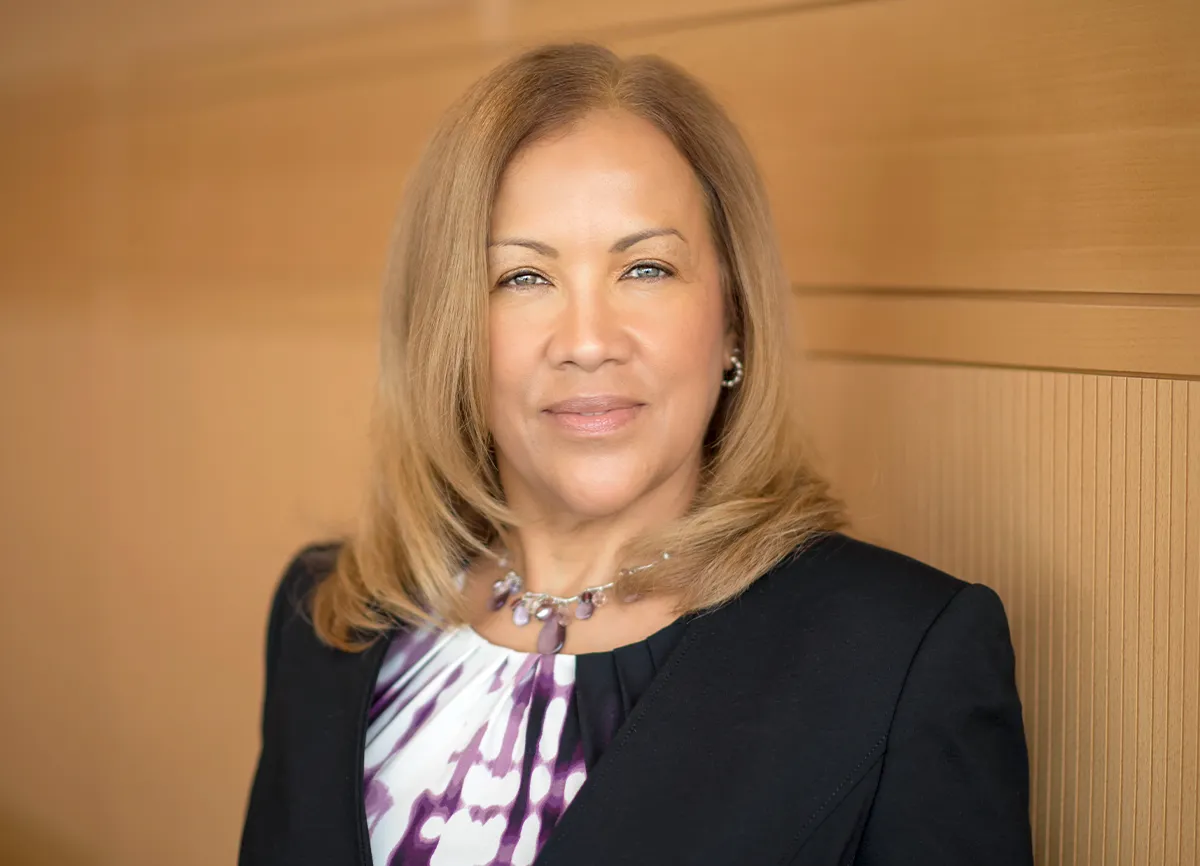
Leading with Purpose
What was your experience like as a student at Fordham Law?
Given where I came from, what struck me about Fordham was how welcoming this place is. I felt completely accepted here. I felt accepted for who I was and for who I could be in the future. I don’t think I could have picked a better law school when it comes to that part of the Fordham story. Beyond acceptance, what stands out about my experience here is the remarkable sense of community. Before I came to Fordham, I had read books and seen movies about cutthroat first-year law students. It was terrifying. But I immediately made friends and found support. It started with Dean John Feerick. Every time we passed in the hallway, he would say, “Hello, Brenda.” The notion that the dean knew who I was made me feel less alone.
I really blossomed at Fordham. I joined Moot Court, served on the Fordham International Law Journal, and I had the best time lampooning law school life performing at the Fordham Follies. I had the privilege of learning from outstanding professors, including Maria Marcus, who guided my Moot Court team and refined my argumentation skills with her expert coaching. I also truly enjoyed my Constitutional Law class with Judge Deborah Batts. We forged a relationship that continued beyond graduation, and she was there to help me through some personal challenges which changed the course of my career.
Given my own journey to law school, I’m hoping that I can be an inspiration to today’s students who may come from their own difficult circumstances. They can see someone like me and say, “Wow, you know, if Brenda can overcome that, then I, too, can thrive at Fordham, right?”
What was your path to becoming FLAA president?
The FLAA recently adopted a Strategic Plan. Could you provide an overview and tell us what you are most excited about implementing as president?
I will highlight a few elements of the plan that I am particularly excited about implementing: expanding alumni engagement, committing to public service, and connecting with law students. Of course, I want to deepen our engagement with alumni and would like to see our alumni outreach continue to expand across the U.S. and internationally.
What are some ways that alumni can get more involved in the FLAA?
It is my profound honor to serve as the FLAA president. Thank you to the alumni community for your unwavering commitment and dedication to our Law School.